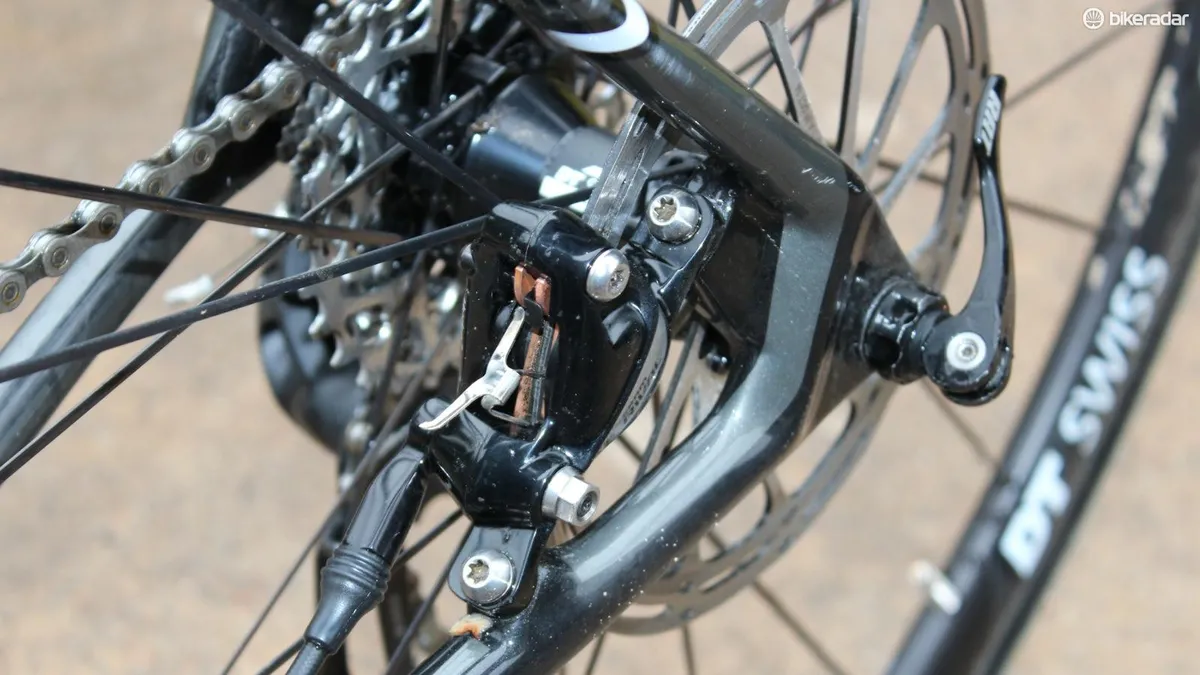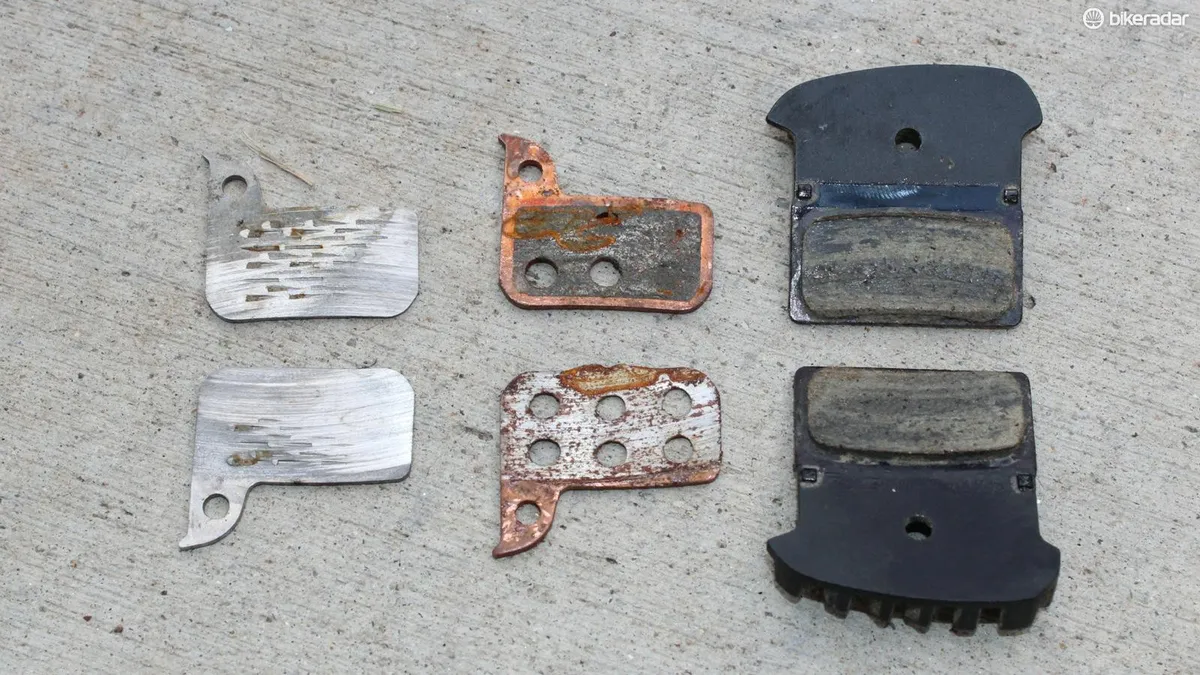Compared with standard rim brakes, hydraulic road brakes can be a godsend in wet conditions, especially when riding carbon wheels. But hydraulic road brakes aren’t magically unassailable, especially if you’re dumb enough to go ride for hours on dirt roads in the rain, as I did quite a bit in May.
Related: Best road disc and caliper brakes
I put organic and prototype SRAM pads and organic Shimano pads to the test on rainy 60- to 80-mile Colorado farm-road rides, where gritty dirt quickly kicked up all over the bike and down into the brake calipers, causing drag on the rotors and wear on the pads.
The test didn’t begin intentionally. After the ButterGold ride obliterated the pads on my bike and several others, I decided to test other pad compound and models on the same course in the same conditions to see if there was a difference.
road hydraulic brake pad test
While the shapes vary from brand to brand, generally you have two options in disc pads: organic for a softer feel, and metallic for more bite and longer wear in the wet.
SRAM specs organic pads on its Hydro R brakes. The brand doesn’t yet offer metallic pads, but you can buy SwissStop metallic pads that fit SRAM calipers. Shimano offers both.
Held on basically flat dirt and paved roads north of Boulder, Colorado, ButterGold turned into a great test case as the peloton sprayed muddy grit all over bikes and riders. Some mechanical wear was to be expected, but with minimal braking over the 80-mile day, the complete destruction of the brake pads was a surprise.
As the month of May in Colorado was obligingly rainy nearly every day, I went out alone a few days later on the same bike but with prototype metallic pads on the SRAM brakes. I was initially concerned that the absence of other riders would result in less muddy grit on the calipers. That concern was addressed within about 30 seconds of rattling across muddy washboard roads, as the rotors began to hiss and scratch.

SRAM prototype metallic (left) and stock organic pads, when new
Those metallic pads on the SRAM calipers met the same fate, grinding away completely within 50 miles, so I turned for home. As before, even the backing plates of the pads took some wear. On this ride, I was braking even less than the first, as I was riding alone. I could still brake — but the sound was horrendous as metal ground on metal, with wet grit grinding in between.
Test ride three was aboard a Shimano-equipped bike. I rode the same route, with the rain again pouring down — and ankle-deep puddles accentuating parts of the farm roads. The familiar hiss emerged, but less pronounced than on the SRAM-fitted bike. As the route dipped in and out of dirt and surfaced road, the rainy paved stretches allowed the calipers to clear. The rain ended at about mile 55, so I abandoned the rest of the route and rode home for about 70 miles on the day.
Once home, I checked the pads and found that, while worn, they still had a good amount of life left in them.

The Shimano pads (at right) took a beating but retained some life
As the Shimano pads were organic, I began to wonder whether the wet-grit problem was not so much a pad-compound question as a brake-system question. The Shimano system seemed to clear more quickly than the SRAM setup. Perhaps this is because the Shimano pistons (the circular pieces inside the caliper that push the pads against the rotor) retract more than the SRAM pistons do, allowing for more clearance between pad and rotor. I asked both brands for piston-retraction measurements; both declined to answer.
The Shimano pistons are 2.5cm in diameter, while the SRAM pistons are 2cm. Could this extra girth allow for better retraction in gritty conditions? Perhaps.
While this little test left me with more questions than answers, one thing became clear to me: Shimano hydraulic brake pads survived wet dirt-road riding, while SRAM pads did not.










